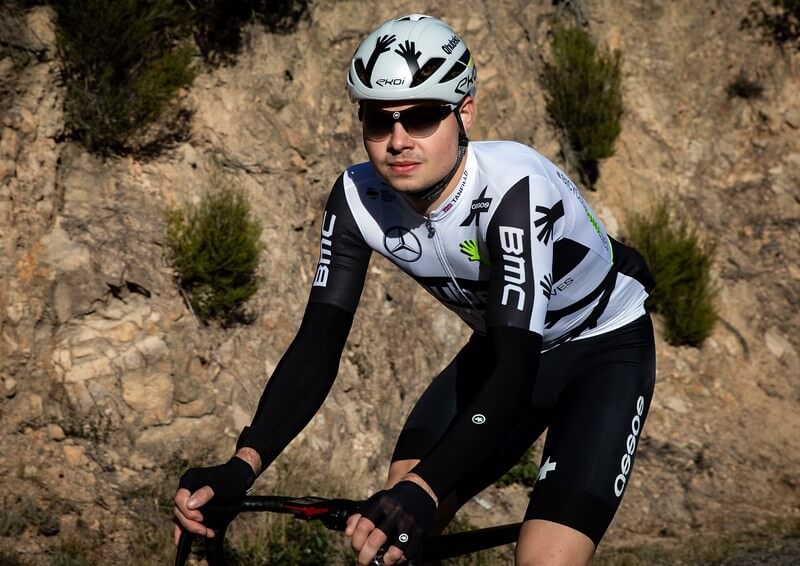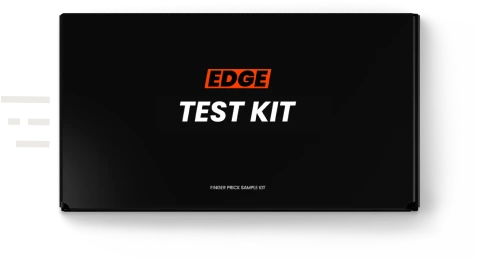
Cycling
What Can We Learn From Professional Athletes
We are constantly inspired by professional athletes making a name for themselves in triathlon, cycling or running and we often look to them for inspiration, ‘the next big thing’ in terms of training methods or new products.
1 min read
Published on
February 23, 2023
Written by
EDGE
Share this article
It’s important to remember that although many amateur athletes may train full time or act ‘professional’, for most the sport we choose to do for fun is just that – for fun. It isn’t our main source of income or our job, and so we shouldn’t worry about it in the same way we do our work.
However there are a few things we can learn from the professionals that can be taken into amateur sport life which we explore below:
Training Volume and Intensity
When you exercise your muscles contract in various ways which results in soreness. The muscles also use up glycogen stores for fuel.
In most cases the pros will be training more than the recreational athlete, and at times harder because this is their main focus. This doesn’t mean the amateur should follow their plan! Remember they have likely got more time to rest and more support on hand should a worry or an injury crop up.
They have also been training for YEARS in their chosen sport – meaning resilience has built up over the years and the progression has been slow and steady. This ‘no rush process’ is something we can all learn from. Take ambassador Carla Molinaro – do you think she got up one day and decided to run Lands End to John O’Groats in a record breaking time? No! She has been a runner (and before that a triathlete) for years, building up the miles, learning about her strengths and weaknesses over that time. Don’t expect to be able to hit 20 hour weeks back to back if you haven’t built up to it and more importantly most of us haven’t got the time for those hours!
Resting and Sleeping
Ever heard someone say; “Well I sat down all day at work, so I must be recovered”. Maybe not! Work can be less than restful both mentally and physically, particularly if you spend a lot of time on your feet. Your coach or your training plan should take this into account. It’s unlikely you will be hitting those run interval target times if you have spent all day on your feet, stressed and rushed, sitting down or not sitting down.
The pros have access to physios, massage therapists and maybe even some snazzy compression boots which all contribute to their recovery. Most importantly, they have more time to relax and sleep as part of their recovery.
Some of our ambassadors get upwards of 10 hours of sleep every night, as part of their goals towards improvement. They actively try to reach this as we would a green box on training peaks because they know how much a difference that makes.
Read this: Why does your body need recovery time
“Aside from the extended travel opportunities as a professional cyclist, for the periods after races there is usually a quiet period to rest and recover without any stress. In multiple one day races just staying in a hotel may seem dull or boring but it’s important to really take advantage of those days to fully recover both physically and mentally. Which can be challenging with a day job, but it's important to get the balance. I usually read or find something productive to do, I can’t just sit and watch Netflix as others do, not until the evening anyway!” - Harry Tanfield, Professional Cyclist
Nutrition
Every athlete is unique, no matter the level. Every athlete will require different nutritional requirements in relation to their age, gender, bodyweight, activity, training, and lifestyle schedule. However, there are some nutritional considerations which differentiate between the elite and recreational athlete. The elite athlete will train twice a day most of the week, therefore will have higher macronutrient requirements and energy needs, in comparison to the recreational athlete who trains at a lower volume and intensity.
So, what can the amateur learn from this? Well on those high volume days (normally the weekend) you should be getting more fuel in. This can be difficult to do, and so you might want to think about fuelling up across a few days either side of a big session day. There’s no use trying to copy another’s nutrition if you don’t actually enjoy those types of foods. Take the time to enjoy what you are eating as well as fuelling the right stuff.
Banana, Peanut Butter and Cocoa Smoothie
Simply blend all these ingredients into a food processor and blend until smooth:
-
250ml soy milk
-
1 banana
-
1 tbsp chia seeds
-
1 tbsp oats
-
1 tbsp peanut butter
-
1 tsp cocoa powder
Nutrition: Energy: 497 kcal Carbohydrate: 57.3g Protein: 20g Fat: 24.4g Fibre: 11g
Fitting it all in
How do you go about fitting your training in around work and social commitments? When competing at the highest level, more often than not training (and recovering) comes before everything else, something the amateur cannot always prioritise. Try writing out all the things you need to do in the week and work out if the training is feasible around all the other things you want to do. If it’s not and you are at risk of not getting enough sleep – ask yourself if it’s really worth it? The extra rest might actually improve your performance more.
Access to Professional Help and Equipment
This is where the biggest difference lies. The support network readily available to professionals greatly differs to the recreational athlete. Harry Tanfield gives us insight into the life of a pro cyclist:
“I guess the way that you don’t have to do anything, other than pin your number on! Everything is done and prepared in advance, nutrition, bike, travel, everything… you take it for granted. It’s not until entering or going to an event yourself you remember how much extra time is required to sort everything out pre and post-race. Some people like having that control, whereas for others I think you can easily get used to that lifestyle. It’s not the real world for sure.
In the pro setting the resources are not endless, but there is pretty much everyone who you would ever need to ensure you’re fit, healthy and ready to race. Whether that be looking at the latest technology in equipment or nutritional planning. Consulting with the team osteo/physios for any issues. Or a check up with a team doctor to keep an eye on certain markers to make sure there are no underlying issues starting to develop deficiencies arising. This is also where Forth Edge comes in. For the past few years, I have been providing full results quarterly to team doctors. Although this is also available to non-professionals too!”
Training with others
The opportunity to train or race with others can be limited if you have to get your sessions done at 6am before work. As a professional it might be easier to choose where you base yourself and who you train with, alongside a more flexible timetable. You may have seen groups or teams of professional runners/triathletes/cyclists choosing to train together in warmer climates over the winter for example.
Harry also had this to add about racing for a team: “The focus on working as a team – usually with one “team goal” as such in races. It can be hard to adjust from racing in non-professional sport, where it’s usually everyone for themselves and everyone is mostly individually focused on their own goal, typically a result. Whereas at the pro level, you have to appreciate that some days you will be working for others and some days you will have your own opportunities available in which to capitalise on. The latter is very important in goal setting.”
Travelling for races
Of course we all would like to race abroad, particularly with the turbulent UK weather. Amateur athletes choose races based on holiday destination and climate. It might not be as easy for all though, fortunately the UK racing scene is getting better and better. With such strong athletes in the UK, it might not always be necessary to travel too far. Harry warns it’s not always as glamorous as you might think as an athlete ‘out on the road’ for most of the year:
“Races are more frequent, longer in duration and can be all over the world. So instead of 1-3hrs in the car, it’s normally pretty much a full day to get to each race. It can be hard to adjust, but small things like having a suitcase / bag pretty much packed all the time and knowing what you’ve left in your bag with the team. Essentially having 2x sets of everything for home and racing to minimise packing unpacking.”
Remember that it doesn’t matter what level of athlete that you are, which sport you take part in, or how much training you do; everyone that takes part in sport is an athlete. Getting the balance between training resting and nutrition is key at whatever level you are. Oh and it’s supposed to be fun too!
Blood test for
Male Cyclist
18 Biomarkers Included
sports doctor review
Results in 2 working days
Flexible subscription
Medically Reviewed

This article has been reviewed by our medical expert
Our expert Dr Thom Phillips works in NHS general practice and has a decade of experience working in both male and female elite sport. He has a background in exercise physiology and has published research into fatigue biomarkers.
Get 10% off your first order
Want regular tips on how to make the most of your results? Join our newsletter and we'll give you 10% off your order!
